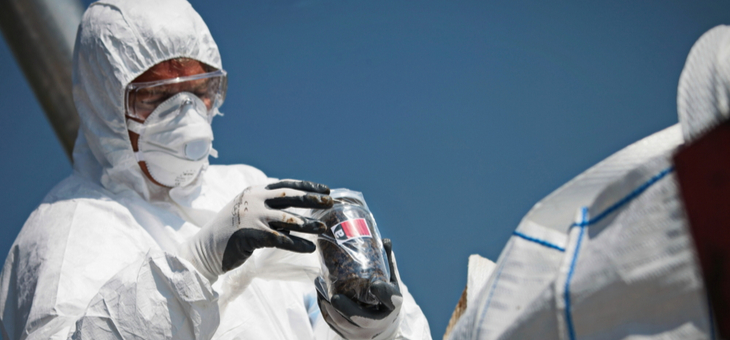Around one-third of Australian homes contain asbestos, so it’s important to know what to look for and how to deal with this potentially dangerous substance.
Asbestos was widely used as a construction and insulation material in buildings constructed before the late 1980s.
Australia banned the use or import of blue asbestos, brown asbestos and asbestos-containing products in the mid-1980s. The manufacture and import of white asbestos products were not banned until December 2003.
However, building materials may have been stockpiled, stored or recycled and used in the construction of buildings after the bans came into force. This means there is still a chance that materials containing asbestos may be in buildings constructed after these dates.
Where to look
If your home, or the home you are looking to buy, was built before 1985, it is highly likely asbestos will be present in some form.
Within the home, asbestos building products were commonly used as external cladding, internal wall linings and for eaves and soffits.
Asbestos building products were also used in laundries and bathrooms in place of tiles, and corrugated asbestos fibro was used for roofs and fences.
Materials such as wall cladding and fibro may look harmless but they can actually contain asbestos.
If you are not sure if a product in your house contains asbestos, play it safe and assume that it does.
What to do if you suspect asbestos
In normal circumstances, the risk to householders from asbestos is very low. If the house contains bonded asbestos products that are in good condition, it is best to leave them alone but check them from time to time for any signs of damage or deterioration.
The main concern occurs if you are thinking about renovating, because the material will become dangerous if it is disturbed or damaged.
If you renovate without assessing the building material, you are at risk if asbestos fibres enter the air. When asbestos fibres enter the air, the dust can enter your lungs and potentially cause serious health problems, such as lung-related asbestos disease or mesothelioma, a form of terminal cancer. Although these diseases are rare, the consequences are fatal.
Because of these dangers, if you’re renovating or planning to renovate, it is important to remove any materials that contain, or are likely to contain, asbestos, and be sure to exercise extreme caution.
In some states and territories there are restrictions on how much asbestos cement sheeting homeowners can remove themselves without a licence; check the regulations in your state or territory for details.
If you believe that you might have to disturb any products suspected to contain asbestos, then you should have the product tested by an accredited asbestos expert, who can advise you whether the product contains asbestos and how you should deal with it.
Some jobs are best left to the experts. If you are considering a renovation that involves disturbing large amounts of asbestos cement materials, removing friable asbestos products, or demolition of all or part of your property, don’t do this work yourself. Engage a licensed asbestos removalist who knows how to manage this work safely, and without risk to you or your neighbours.
If you enjoy our content, don’t keep it to yourself. Share our free eNews with your friends and encourage them to sign up.
Related articles:
https://www.yourlifechoices.com.au/lifestyle/leisure/carpet-cleaning–hire-a-pro-or-diy
https://www.yourlifechoices.com.au/age-pension/income-and-asset-tests/how-does-centrelink-value-land
https://www.yourlifechoices.com.au/finance/property/increasing-the-value-of-your-home

